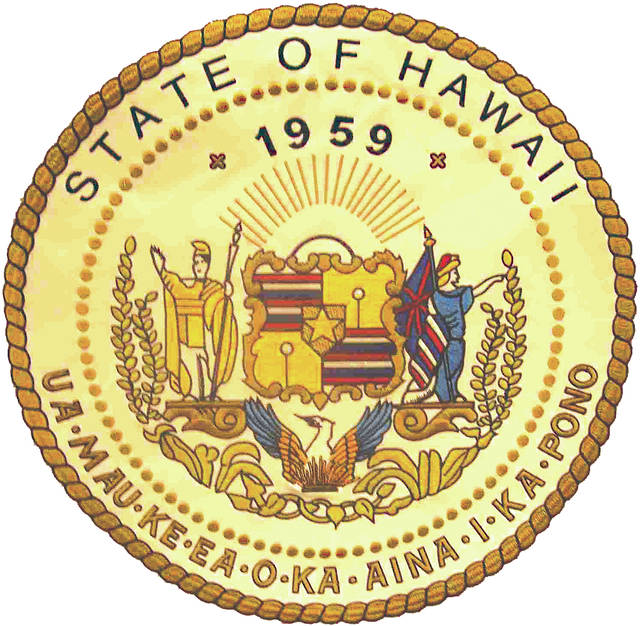HILO — A $2.4 billion bailout of the Honolulu rail project, partly subsidized by an increase in the statewide hotel tax, advanced by a 6-5 vote Monday in the Senate Ways &Means Committee.
HILO — A $2.4 billion bailout of the Honolulu rail project, partly subsidized by an increase in the statewide hotel tax, advanced by a 6-5 vote Monday in the Senate Ways &Means Committee.
Big Island Sens. Lorraine Inouye and Kai Kahele were among the no votes.
The bill likely goes to the full Senate today. The House has scheduled a committee meeting Wednesday.
SB 4 levies a statewide 1 percent increase on the transient accommodations tax dedicated to Honolulu rail while setting the share of the TAT to be divided by the counties at $103 million permanently. It also gives counties the option of raising their general excise tax by one-half percent to be used for roads.
Committee members voting yes said neighbor islands benefit from tax revenues generated by the much more populous Oahu, and imposing a statewide tax on hotels is within their authority.
“Do not Oahu taxpayers fund many of the neighbor island projects?” asked Sen. Michelle Kidani.
Others worried about the precedent of levying a statewide tax for a county project.
“Now we’re pitting neighbor islands against Oahu,” said Sen. Breene Harimoto. “To say we’re going to use statewide TAT money to help fund a local project … I’m just very concerned. … I have a large concern with that policy, setting that precedent.”
The bill also extends Honolulu’s current half-percent general excise tax for three years, and reduces how much the state takes as administrative fees. And, it requires an audit and more oversight for the rail project. The measures come as the cost of the rail project balloons from $5.26 billion in late 2014 to $8.2 billion.
Honolulu Mayor Kirk Caldwell acknowledged there has been a history of “over-promising and under-delivering” on the project. But he questioned whether the TAT increase is the way to go.
“We have legal concerns about the statewide TAT increase and the deposit of that increase into the Mass Transit Special Fund,” Caldwell said in testimony. “The GET surcharge has been tried and true for 10 years, which is why it seems the best way to go.”
Legislative leaders, however, want to use the TAT increase because it will “front-load,” or allow the city to pay more in advance, saving interest charges.
Testifiers, generally repeating testimony they made in a House-Senate informational session earlier this month, mostly opposed the bill.
Hotels and hotel associations lamented the proposed 1 percent TAT increase, saying it could discourage tourists. The 8 percent annual growth rate of TAT over the next 13 years factored into the bill is too optimistic, they added.
“Government entities at both the state and county levels cannot continue to levy additional taxes on the visitor industry, our primary economic driver, as those costs will be passed on to the visitors, who can choose to vacation elsewhere,” said Stephanie Donoho, administrative director for the Kohala Coast Resort Association.
A 1 percent increase for a $300 hotel room would add $3 to the bill.
“Is that going to break the back of the industry?” asked Sen. Brickwood Galuteria, whose Waikiki district generates a lot of the tax.
“You put too many drops in the bucket and it overflows,” responded Ed Case, senior vice president of Outrigger Enterprises Group.
Wesley Machida, director of the state Department of Budget and Finance, which supports the bill, said his calculations showed the 8 percent growth figure is reasonable. Case, a member of the state Council on Revenues, said the calculations don’t take into account AirBnB and similar hotel alternatives, which now account for 37 percent of visitor lodging.
The proposed cap on the TAT for counties also spurred opposition. The Legislature capped it during the Great Recession, resulting in Hawaii County getting about $20 million less than prior years. The $103 million cap proposed in the bill is a $2 million increase from the $17.3 million the county got last year.
“This cap is unnecessary to achieve all other aspects of the bill to finance Honolulu’s rail,” said Hawaii County Mayor Harry Kim. “We already had to increase our property tax to make ends meet.”
This should not be a neighbor island versus Oahu issue, said Chu Lan Shubert-Kwock, president of the Chinatown Business &Community Association, who favors the bill as written.
“This rail is for everyone. We should not be divisive,” Shubert-Kwock said. “This is for Hawaii. This is our capital. This should be our showplace.”

